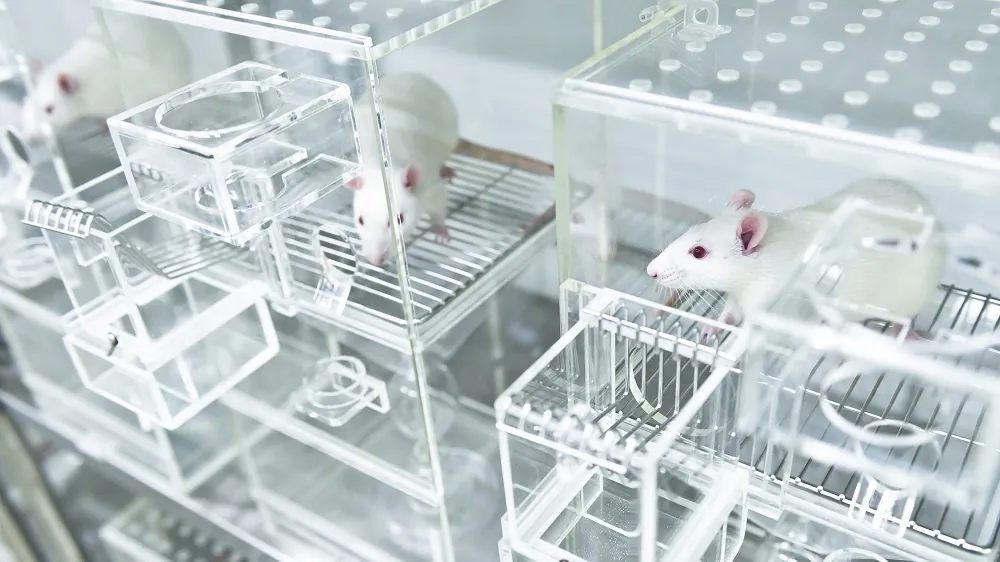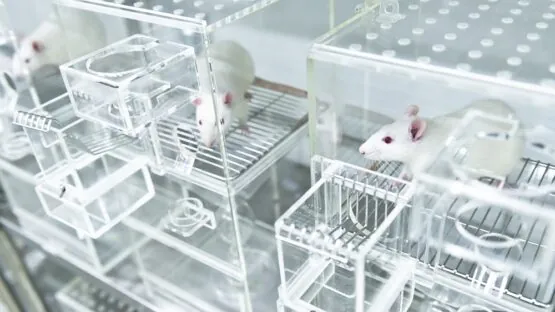A team of researchers, including Matt Kaeberlein and Brian Kennedy, has published a preprint discussing the necessity of using long-lived animals in life extension research.
The Interventions Testing Program (ITP) uncovers weaknesses
The ITP is run by the National Institutes of Aging and described by these researchers as being rigorous and a gold standard. Its purpose is to discover what life-extending interventions work in healthy mice. ITP studies use UM-HET3 mice, a hybrid strain that lacks specific pathologies and is longer-lived than the standard Black 6 strain used in most mouse research.
The ITP has dashed the hopes of people hoping for multiple prospective interventions. Metformin, resveratrol, and nicotinamide riboside, which had all been previously found to extend life in mice, failed to replicate statistically significant results under ITP testing. This preprint’s authors offer multiple potential explanations, including the health of the tested mice, but they focused on the fact that the ITP may simply be more rigorous than the previous studies were.
Metformin and caloric restriction
Metformin is a caloric restriction mimetic that is often associated with life extension. However, when taking a look at multiple studies, these researchers found a strong negative relationship between the lifespan of the control group and the impact of metformin. Shorter-lived cohorts had their lives extended on metformin, and longer-lived cohorts showed no benefit. This was found to be true whether the studies were part of the ITP or not.
The same appears to be true of caloric restriction. Like with metformin, short-lived control groups led to substantial improvements in lifespan with metformin treatment. However, in studies in which the control group lived longer lives, the treated mice actually appeared to live slightly shorter lives. A negative correlation between base lifespan and the impact of CR was found in yeast, worms, and fruit flies as well.
The researchers also examined whether this negative correlation existed for other drugs. They found that in well-controlled, large, and robust studies that had multiple cohorts, there was a very significant negative correlation between treatment effect and control group lifespan. Therefore, many prospective interventions are able to help unhealthy animals, but they offer no benefit for healthy ones.
A question of husbandry
The researchers took a look at differences in animal husbandry, which refers to the conditions under which animals are kept. The researchers note that the average lifespan of mice in control groups had significantly risen between the years 1960 and 2000. This was not due to strain choice, as it also applied to experiments specifically using Black 6 mice.
This issue of husbandry also applies today and even to the ITP. ITP studies have been conducted at the Jackson Laboratory, the University of Michigan, and the University of Texas. On average, at the University of Michigan, control male mice lived for 857 days and females lived for 887 days. However, at the Jackson Laboratory, these numbers were still 887 days for females but only 782 for males. At the University of Texas, it was 753 days for males and 872 days for females. The University of Texas was, unsurprisingly, where male mice had the strongest responses to interventions.
The 900-day rule
These researchers believe that, although masked by husbandry and related issues, the true median lifespan of untreated healthy mice, for both the UM-HET3 and Black 6 strains, is close to 900 days. Therefore, they propose the institution of a “900-day rule”, plus or minus 50 days, for lifespan extension studies in mice. An intervention that brings shorter-lived mice up to this standard is a “longevity-normalizing” intervention; only by bringing mice above this threshold, the researchers argue, can an intervention truly be considered life extension.
Using this metric, the researchers re-examined the interventions tested under the ITP. Rapamycin was found to pass this threshold, and mice that had genetic telomerase-related interventions passed it as well. Three drugs that reduce heart rate also extended the lives of mice. Genetic interventions related to IGF-1 and insulin signaling passed this threshold by a wide margin.
What this means for people
Longevity testing in mice is almost impossible to perfectly map to people, simply because human beings have life-extending biological mechanisms that mice don’t. Likewise, species like long-lived baleen whales and naked mole rats have mechanisms that we don’t. However, as the 900-day rule appears to be a strong metric for winnowing out compounds that won’t extend the base lifespan of mice, the compounds that pass it are, presumably, more likely to be effective in human beings.
The discrepancy between maximum lifespan and actual lifespan is also directly applicable to people, who, unlike mice, do not have researchers whose job it is to keep them in ideal conditions. Maintaining healthy habits and avoiding harmful substances are simple and well-known ways to maximize healthy lifespan. However, these beneficial practices are, in this context, merely “longevity-normalizing”. Extending healthy lifespan beyond that is the significant challenge that rejuvenation biotechnology seeks to overcome.



